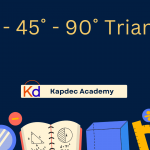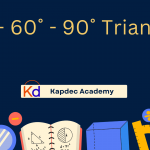If you’re preparing for AP Physics 1, mastering physics formulas alone isn’t enough — a strong grip on key math concepts is what separates top scorers from average ones. Since AP Physics 1 is algebra-based, you don’t need advanced calculus, but you do need to apply fundamental mathematical skills quickly and accurately. In this guide, we’ll break down the essential math tools you need to understand, practice, and apply to excel in the exam (1)
Why Math Matters in AP Physics 1
Physics is the science of how the universe works — and math is the language it’s written in. From motion and forces to energy and waves, every question requires mathematical reasoning. If you’re confident in the math, solving complex problems becomes much easier and faster.
1. Algebra: The Foundation of All Problem Solving
Algebra is the most frequently used math skill in AP Physics 1. You’ll use it to manipulate formulas, solve for unknowns, and rearrange equations.
Key Skills to Master:
- Solving linear equations and inequalities
- Rearranging formulas to isolate variables
- Substituting known values into equations
- Handling equations with multiple variables
2. Graphing and Slope Interpretation
Physics loves graphs. Whether it’s velocity-time or force-displacement, you must know how to read, interpret, and create graphs.
Key Skills to Master:
- Finding slope (rate of change): slope = rise/run
- Understanding what slope means (e.g., slope of velocity-time = acceleration)
- Calculating area under curves (often represents physical quantities like distance or work)
Example:
If a velocity-time graph has a constant slope, the object’s acceleration is constant.
3. Proportions, Ratios, and Dimensional Analysis
Understanding how one quantity changes when another changes is central to physics. Many AP problems test your ability to use ratios and proportional reasoning without heavy calculation.
Key Skills to Master:
- Setting up and solving proportions
- Understanding direct and inverse relationships
- Using dimensional analysis to check equations
Example:
If F=ma and mass doubles while force stays constant, acceleration halves.
4. Trigonometry in Vector Components (No Advanced Trig Needed)
While AP Physics 1 is algebra-based, basic trigonometry appears often — especially in projectile motion, inclined planes, and forces.
Key Skills to Master:
- Using sine, cosine, and tangent for vector components
- Resolving forces into perpendicular components
- Applying Pythagoras’ theorem for vector magnitude
Example:
If a force F acts at an angle θ:
- Horizontal component: Fx=Fcosθ
- Vertical component: Fy=Fsinθ
5. Quadratic Equations and Motion
Kinematics problems often involve quadratic relationships, especially when time is unknown. You should know how to solve these equations using factoring or the quadratic formula.
Key Skills to Master:
- Recognizing quadratic motion equations
- Solving quadratic standard equation
- Applying roots to physical scenarios (like projectile flight times)
6. Systems of Equations
Many problems involve multiple forces or objects. Solving two equations with two variables is common — especially in equilibrium and Newton’s law problems.
Key Skills to Master:
- Substitution and elimination methods
- Interpreting multiple constraints in physics scenarios
Example:
If two objects are connected by a pulley, their accelerations and tensions are linked. You’ll often solve simultaneous equations to find them.
7. Scientific Notation, Units & Significant Figures
Physics involves numbers that can be very large or very small. Using scientific notation simplifies calculations and reduces errors.
Key Skills to Master:
- Converting between standard and scientific notation
- Performing multiplication/division with powers of 10
- Keeping correct significant figures in answers
Bonus Tip: Practice Math Without a Calculator
On the AP Physics 1 exam, the calculator policy allows it for some sections — but many questions are faster solved by hand. Practicing mental math and algebraic manipulation will save you precious time (2).
Quick Checklist: Must-Know Math Concepts
Algebra (solve, rearrange, substitute)
Graphing (slope, area, interpretation)
Ratios & Proportions
Basic Trigonometry (sin, cos, tan)
Quadratic Equations
Systems of Equations
Scientific Notation & Units
Frequently Asked Questions (FAQs)
Why is math so important in AP Physics 1?
Math is the backbone of physics. AP Physics 1 is an algebra-based course, so every concept—from kinematics to energy and forces—requires mathematical application. Without math, you can memorize formulas but won’t be able to apply them to problem-solving. For example, understanding velocity-time graphs or resolving forces on an incline demands algebra, trigonometry, and proportional reasoning. Strong math skills not only help you solve problems faster but also boost your conceptual clarity.
Do I need calculus for AP Physics 1?
No. Unlike AP Physics C, which is calculus-based, AP Physics 1 relies only on algebra, basic trigonometry, and proportional reasoning. That means you won’t be asked to perform derivatives or integrals. However, the logic behind calculus—such as rate of change (slope of a graph) or area under a curve—is tested conceptually. For example, acceleration is the slope of a velocity-time graph, even though no formal calculus is needed.
Which algebra skills should I focus on for AP Physics 1?
Algebra is the most frequently tested math skill in AP Physics 1. You must be able to:
Substitute values quickly and accurately.
Rearrange equations to isolate variables.
Solve for unknowns in multi-variable problems.
How is graphing tested in AP Physics 1?
Graph interpretation is a huge part of the exam. You’ll often see questions involving position-time, velocity-time, or force-displacement graphs. Key math skills include:
Interpreting linear and non-linear relationships.
Graphs test your ability to connect math with physical meaning rather than just crunching numbers.
Calculating slopes (e.g., slope of velocity-time = acceleration).
Finding the area under curves (e.g., area under velocity-time = displacement).
Why do I need trigonometry if AP Physics 1 is algebra-based?
Trigonometry is used in vector problems—particularly in forces, projectiles, and inclined planes. You don’t need advanced trig, but you must know the basics
What role do quadratic equations play in AP Physics 1?
Trigonometry is used in vector problems—particularly in forces, projectiles, and inclined planes. You don’t need advanced trig, but you must know:
This equation is quadratic in t. Solving requires factoring or using the quadratic formula. Often, you’ll find two solutions for time—one at launch and one at landing. Being comfortable with quadratics helps you avoid errors and saves time in problem-solving.
How should I practice math for AP Physics 1?
The best strategy is integrated practice—review math while solving physics problems. Instead of separate math drills, practice algebra, graphing, and trig directly in the context of physics questions. For example, when working on a motion problem, consciously practice rearranging equations instead of just plugging numbers into a calculator. You should also practice without a calculator at times, since some questions are easier solved by hand.
What common math mistakes should I avoid in AP Physics 1?
Quadratic equations appear in projectile motion and kinematics problems where time is unknown. For example:
Solving requires factoring or using the quadratic formula. Often, you’ll find two solutions for time—one at launch and one at landing. Being comfortable with quadratics helps you avoid errors and saves time in problem-solving.
Final Thought
Mastering the math behind AP Physics 1 isn’t just about solving equations — it’s about building the confidence to tackle real-world problems and complex exam questions with clarity. Whether you’re strengthening your algebra skills, refining your graph analysis, or sharpening your trigonometry, every bit of math preparation gives you a crucial edge (3).
If you’re looking for structured guidance, curated practice problems, and expert-led strategies, Kapdec offers specialized study resources designed to simplify difficult math concepts and directly align them with AP Physics 1 requirements. With Kapdec’s support, you can bridge the gap between theory and application — and step into the exam fully prepared to excel.







